FILOFONIE
RECITAL RECORDS
Adriano Spatola
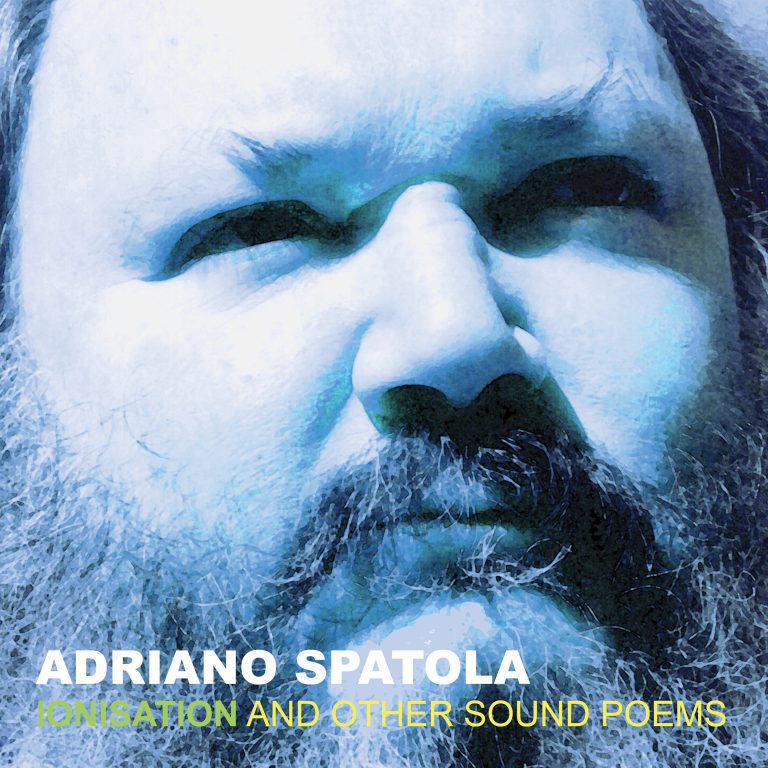
ADRIANO SPATOLA, IONISATION AND OTHER SOUND POEMS
edited by Giovanni Fontana
Produced & mastered by Sean McCann
Recital Records, Los Angeles
LP, CD and book
SIDE A
1) Variazioni e varianti – Logica del segno sonoro – Medley
from “Baobab” n° 20, audiotape, Elytra Edizioni, Reggio Emilia, 1989.
2) Metro Goldwin Mayer Score (with Paul Vangelisti)
from Il mondo è stato riconsiderato. Poesie italiane del secondo Novecento, edited by Endre Szkàrosi, CDrom, Bölcsész Konzorcium HEFOP Iroda, Budapest, 2006.
3) Ocarine
from Oggi poesia domani, “Baobab” n° 3, audiotape, Edizioni pubbliart s.r.l., Reggio Emilia, 1979.
4) Biographie (with Gian Paolo Roffi)
from “Baobab” n° 15, audiotape, Edizioni Elytra, Reggio Emilia, 1987
5) Valse Sabre - Excerpt (with Giuliano Zosi, piano)
from L'in-canto del verso, edited by Giovanni Fontana and Luca Salvadori, “Baobab” n° 23, box with 4 audiotapes, Edizioni Elytra, Reggio Emilia, 1994.
6) Aviation / Aviateur
The first version was published in “Baobab n° 1, audiotape, Edizioni Pubbliart s.r.l., Reggio Emilia, 1978.
This recording was made available by Paul Vangelisti.
SIDE B
1) Poker Foundation
Archivio Poiesis, audiotape, Alatri, 1980.
2) Hommage à Eric Satie
(Adriano Spatola, Giulia Niccolai, Irene Aebi, Alain-René Hardy: voices / Steve Lacy : orchestration, sax, scissors and knife / Irene Aebi : strings / Adriano Spatola : typewriter / Jean-Jacques Avanel : radiator, flute and glasses / Helene Haitier : keys and rattle), from Futura, edited by Arrigo Lora Totino, box with 7 LP 33 rpm, Cramps Records, Milano, 1978.
3) Pagine gialle (by Adriano Spatola with the collaboration of Gian Paolo Roffi)
from Gian Paolo Roffi, Vox. Poesie sonore 1986-2004, CD, Edizioni d'arte Félix Fénéon, Ruvo di Puglia, 2009
4) Punto interrogativo (by Gian Paolo Roffi with the collaboration of Adriano Spatola), 1988
from Gian Paolo Roffi, Vox. Poesie sonore 1986-2004, CD, Edizioni d'arte Félix Fénéon, Ruvo di Puglia, 2009
5) Ionisation. 11'04''
from Adriano Spatola, “Baobab” n° 20, audiotape, Elytra Edizioni, Reggio Emilia, 1989.
Last recording of Spatola, aired on "Audiobox", Rai Radiouno, 12/12/1988.
ADRIANO SPATOLA: TOTAL POET
Poet, theoretician and critic of the Italian neo-avant-gardes, Adriano Spatola was a subverter of linguistic and expressive models. His poetic project tended toward a totalizing dimension. In his fundamental essay, Toward a Total Poetry, [1] he clearly pointed to the vastness and complexity of a similar kind of research, placing itself beyond whatever limitations of a linguistic, structural, methodological, technical, disciplinary or media kind carried on toward totality, organizing itself as a globalizing act. So that every aspect of the creative gesture ought to be understood as a means not an end. He writes that poetry “today seeks to make itself into a total medium, to escape any limitation, to incorporate theater, photography, music, painting, typographic art, cinematographic techniques and every other aspect of culture, within a utopian desire to return to its origins.”[2] Thus, as a careful observer of the intermedia landscape, the poet records in his or her book a very useful study of the “positions” of research in action, the absolute certainty, within the poetic word, between its visual and aural dimensions.
Adriano Spatola, who was a very active part of his times, so full of ferment and tension, immediately puts an emphasis on the new reality: “Theater merges with sculpture, poetry becomes action, music turns into gesture and at the same time uses pictorial-type procedures in its notation: terms like ‘happening,’ ‘environment,’ ‘mixed media,’ and ‘assemblage’ are indicative of this cultural situation.” [4] He moreover underlines the fact that these phenomena of “confusion” in the arts don’t simply represent summations, but constitute dynamic, interactive, highly unpredictable events. We are not dealing with inert superimpositions but with productive simultaneity.
This essay of his, lucid and well-documented, immediately establishes itself as a fundamental point of reference for every other investigation into those poetics, at the time undergoing rapid transformations.
On the occasion of the exhibition “Parola fra spazio e suono,” [“Words Between Space and Sound”]. fifteen years removed from the publication of his essay by those at Rumma, he writes: “By now there exists a general theory of visual writing, as there exists a general theory of sound poetry. I say ‘general theory’ alluding to a total hypothesis of verbal art. This hypothesis isn’t a simplification but a global analysis of the problem: from the graffito to television advertising, from the scream to electronic music, we find a mental continuity, as in the profound diversity of attitudes and techniques.” From the beginning of the sixties, Spatola perfectly well understood that verbal art would be involved to an increasingly greater degree in processes of linguistic trespassing and of inter-artistic contamination.
For Spatola the idea of a poetry as the true center of reality is outlined quite early. Even if for some years he distances himself from eventual mystical identities between literature and life or between poetry and reality, [5] he comes to touch on that project poetry-life, which already pertained to various moments of the historical avant-gardes, and that at the time occupied the interests of the Fluxus movement. Profoundly influenced by international ferment of the “intermedia” type, Spatola in Verso la poesia totale writes: “… that which marks our epoch is no longer simply the system of the division of labor …, but also the desire for a world in which every cultural difference between the artist and the non-artist, between the intellectual and his public may definitively disappear. Total poetry seems today to offer the reader … the very tools of poetic creation, in their structural reshaping.” [6]
In effect, intermedia’s fluidity identifies artist/audience relationships yet completely unknown.
Behind the idea of “total poetry,” which doesn’t offer the reader a preconceived product, but the tools themselves of poetic creation, is revealed the utopian project of overcoming the split between subject and object, between theory and practice. We are not only proposing expanding the fields of expression or multiplying the power of meaning, we are almost proposing a remaking of the world, that world that in Guy Debord’s [7] view seems fragmented and deceptively recomposed by global spectacle. If the world appears incongruous, perhaps there’s hope for a remaking of the total human, even by means of poetic practice. The traditional reader’s passivity is outmoded by a total gesture that’s tied to “concerns for the physical material with which the text is constructed.” [8]
The roles of gesture and dexterity as supporting elements in the technical processes of composition, the expansion of operational fields and the importance of decontextualization, the function of visual and aural components and the presence of the body, their correspondence as producers of meaning, the necessity for synthesis and immediacy in the poetic sign constitute the fundamental themes of this poetic: all the elements that come together in the area of his “total poetry,” contributing to affirm meaning.
Many times Spatola mentions an hyperspace as a multi-dimensional continuum, within which he admits only who is capable of abandoning the meager institutional environment, of what’s current, preconceived. Constructing a world to set against the given one and, in fact, all the work going into Geiger Editions and the magazine TamTam, [9] is aimed at the search for a new poetic language to become the most transgressive possible regarding attitudes and institutionalized gestures and thus, generally liberating. The visual texts and the sound pieces will be emblematic. As could be predicted, the criticism of this behavior was certainly not spared Spatola, nor the poets of the TamTam group, while visual, aural and performative practices are expanding a network of relationships ever more ample and articulated. Mulino di Bazzano, in the Enza River Valley, the magazine’s first editorial office, is soon to change into a real beacon for wandering poets. From there Adriano Spatola and Giulia Niccolai report, coordinate and organize, along with editorial ventures, reviews, exhibitions and festivals. The echoes of TamTam reach every corner of the world with surprising results not only on the artistic plane, but in socio-cultural and human terms.
In these new surroundings numerous editorial ventures are launched; books are printed and, not without its share of problems, a clear sign of independence is launched from the Mulino, while the frequent visits of poets and artists give the place a particularly lively and creative atmosphere. In this climate Adriano Spatola gives his full attention to linear, visual and sound texts; looks after his professional relationships, puts together exhibitions; invents performances that he will present in major poetry festivals in Italy and abroad. Whether it be even in discrete areas, the linguistic confluences always underline the intermedia perspective.
Thirty years after Adriano Spatola’s passing, his lesson points out that the roads still practicable today are those characterized by a strong critical posture, that fully consider the language’s material nature, that leave behind the limitations of the marketplace, that are well able to distinguish between multimedia and intermedia, that always guarantee an alternative to the institutional linguistic system. In so far as they know how to construct language, as Max Bense said: to write “means to construct language, not to explain it.” [10]
Adriano Spatola writes in the preface to his essay that “total poetry is consumed at a speed that can no longer be measured.” This is quite true, in fact, as it constitutes a clearly dynamic, fractal, all-encompassing dimension, exactly as it took place in his memorable performances, where his body becomes the center of a field of magnetic forces bound to the world. Every beat, every pulsation is a way of allowing communication, in favoring hyper-aesthetic connections. The body is a tam-tam that dispels energy, that actuates a process of ionization. But the body doesn’t simply exude: it’s also a receptor of stimuli coming from the audience immediately inscribed in itself. The performative event is tied to the context more than it might appear. The performance influences every external situation, every casual happening, the entire setting, and becomes influenced too, in turn, by reflecting and modifying the moment. It’s a game of mirrors played at the same time by poet and audience, to which the poet turns directly, accepting the conversation and the challenge, moving on uninterruptedly and indefatigably toward total poetry.
Note
[1] Adriano Spatola, Verso la poesia totale, Salerno: Rumma, 1969; then Turin: Paravia, 1978. There is only one version of Toward a Total Poetry in English [trans. Brendan Hennessey & Guy Bennett, afterword by Bennett], Los Angeles: Otis Books / Seismicity Editions, 2008.
[2] Toward a Total Poetry, ibid.
[3] Ibid.
[4] Parola tra spazio e suono. Situazione italiana 1984, curated by Luciano Caruso, Ubaldo Giacomucci, Arrigo Lora-Totino, Lamberto Pignotti, Adriano Spatola; exposition catalog, Palazzo Psaolina, Viareggio, November 24-December 16, 1984.
[5] Editorial in TamTam 2, 1972.
[6] Toward a Total Poetry, ibid.
[7] Guy Debord, Society of the Spectacle (translation by Fredy Perlman and friends), Black & Red, 1970; rev. ed. 1977,
[8] Toward a Total Poetry, ibid.
[9] The literary magazine was founded by Spatola and Giulia Niccolai in the first months of 1971, but the first number didn’t appear until the year after.
[10] Toward a Total Poetry, ibid.
Giovanni Fontana [traslated from Italian by Paul Vangelisti]
BIOGRAPHICAL NOTE
Adriano Spatola (Sapjane, Yugoslavia, 1941-Sant’ilario d’Enza, 1988) studies at the University of Bologna, where in 1961 he publishes his first book of poems, Le pietre e gli dei [“The Stones and the Gods”]; but immediately abandons that hermetic style of writing. The courses he takes with Luciano Anceschi are illuminating. In 1962 he starts the magazine Bab Ilu. He is interested in the work of the Novissimi and in 1963 he is involved with the literary conference in Palermo of the groundbreaking “Gruppo 63.”
Anceschi invites him to write for the magazine Il Verri; contributes to Il Mulino, to Nuova Corrente and begins working as a French translator.
The appearance in 1964, from the publisher Feltrinelli, of his novel L’oblò [“The Porthole”] puts him at the center of critical attention. From 1964-67, he publishes, with Vincenzo Accame, Giovanni Anceschi, Giorgio Celli, Corrado Costa, Antonio Porta and Nanni Scolari, the magazine Malebolge. The magazine introduces the brief season of “parasurrealism” that leaves in any case obvious traces in his subsequent poetic work. In the meantime he watches the international panorama of “concrete poetry,” follows the Fluxus phenomenon and appreciates the work of Dick Higgins on intermedia. On the “visual” front he is part in the debate about verbal-visual experimentation taking place in Italy.
From the publisher Sampietro appear, in 1965, Poesia da montare [“Poems to Assemble”] and, in 1966, Zeroglifico [“Zeroglyphic”]. In 1966 he publishes his first major poetry collection, L’ebreo negro [“The Nigger Jew”] with Scheiwiller, and launches the idea of Geiger which he will realize, with his brother Maurizio, in the following year. This would be a matter of a “hyper-experimental” anthology introducing to Italy the new and original editorial model of assembling press, which had just appeared in the U.S. with Phyllis Johnson’s Aspen, but entirely unknown in Europe. The same magazine, Richard Kostelanetz’ Assembling, doesn’t get going until the start of the 1970s. His meeting Julian Blaine is catalyzing (Spatola was developing with Blaine the “Rabelais” project, an international, interdisciplinary publication that was never realized). Geiger marks the launch of an active laboratory that expanded his professional relationships and the start, as well, of the poetry editions of the same name.
A kind of general experiment in interdisciplinary, intermodal and intermedia artistic communication is carried out in August 1967 at Fiumalbo (in the province of Modena). Thanks to the initiative of Claudio Parmiggiani, Costa and Spatola, and with the complicity of the mayor Mario Molinari, the week-long festival/happening, “Parole sui muri” [“Words on Walls”] marked a new chapter in the history of the avant-gardes.
In 1967 he becomes part of the editorial board of Quindici in Rome and works there until the magazine’s closing in 1969, because of significant political difference among the editors. Spatola senses the crisis of “politically committed writing,” which seems to him an obvious and useless posture, and chooses, without hesitation, poetry, making a crucial life choice.
He publishes Verso la poesia totale with Rumma in 1969, and with the Geiger imprint, creates the magazine TamTam in 1972. Its first editorial office, at the Mulino di Bazzano, in the Enza River Valley, soon becomes a true beacon for wandering poets. From there Adriano Spatola and Giulia Niccolai report, coordinate and organize, along with editorial ventures, reviews, exhibitions and festivals. The echoes of TamTam reach every corner of the world. He publishes the long poem Majakovskiiiiiiij (1971), followed by Algoritmo (1973) and the collection Diversi acorgimenti [“Various Devices,” 1975]. In 1976 he becomes part of the editorial board of Doc(k)s in Marseilles, an international poetry magazine directed by Julian Blaine. La composizione del testo appears in 1978, and with the publisher Ivano Burani creates Baobab, the first Italian audio-magazine of sound poetry. In 1981 he creates with Tommaso Cascella the magazine Cervo Volante, which he directs through issue 11. In 1982 he edits with Paul Vangelisti (his U.S. translator) the anthology Italian Poetry: 1960-1980: from Neo to Post Avant-garde. The following year he publishes the collection La piegatura del foglio [“The Folding of Paper”]. Meanwhile, he participates in one-person and group shows, taking part in numerous anthological exhibits in Italy and abroad, himself curating several important surveys of visual poetry. His performances are numerous as well, ironic and very impactful. The success of these poetic actions carries him even as far as the televised limelight. His body, his voice’s presence dominate the scene and sometimes take on a shamanic character. In his last years, Spatola offers the public, even more decisively, the poem of himself. It’s no coincidence that in his last performance, only two days before his passing, he exhorts the audience, saying: “I’m honored by this death. I’ll do a funeral march on my body.” [1]
[1] In Baobab 20. Recorded live in Rome, November 21, 1988.
[G.F.]
Arrigo Lora Totino
ARRIGO LORA TOTINO, OUT OF PAGE
edited by Giovanni Fontana
Produced & mastered by Sean McCann
Recital Records, Los Angeles
LP and book
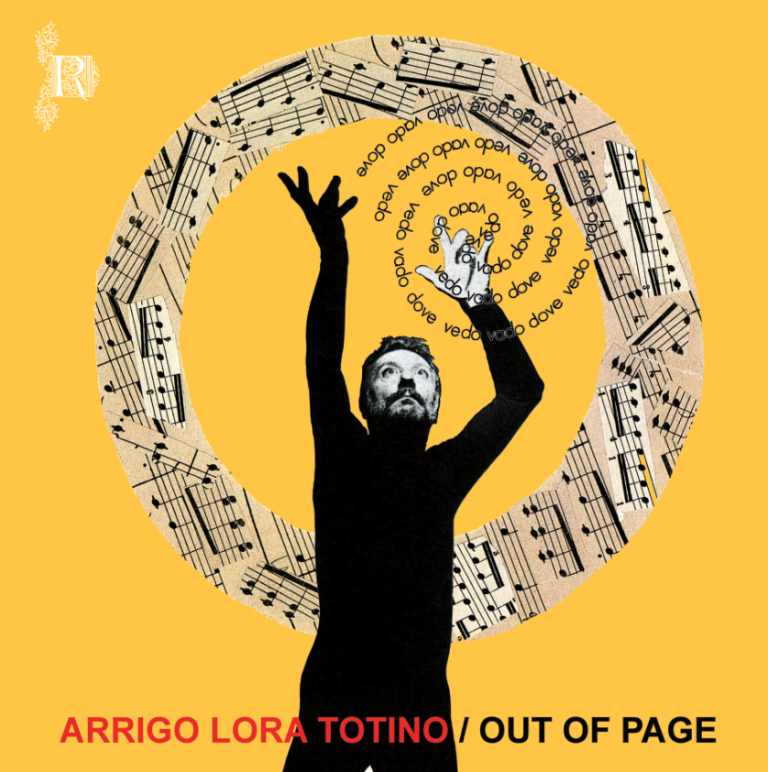
Collection of recordings by the Italian sound and concrete poet Arrigo Lora-Totino (1928-2016). His place in the history and development of poetical intermedia is undisputed.
This LP holds fourteen voice-based tape works made from the years 1968 to 2000. While there is some use of cut-up tape manipulation, the artistry truly lies in his performance of the sound plays. Multi-tracking is utilized and Arrigo’s nebulous voice paintings splat and click and glide. His bold expression is inspiring to me: it leads by example in encouraging the pulling of oneself further into their art.
I was staying at a hotel in San Francisco when I awoke in a sunfilled room to an email from Giovanni Fontana telling me that Arrigo had passed away. I was saddened by the departure of such a creative man, yet proud to be working with and perpetuating his legacy.
• Scarce edition of 310 LPs on black wax/white poly-lined sleeves
• 16-page pamphlet with score excerpts, artwork, & program notes written by Totino, and an essay written by Giovanni Fontana
• Restored & mastered by Sean McCann
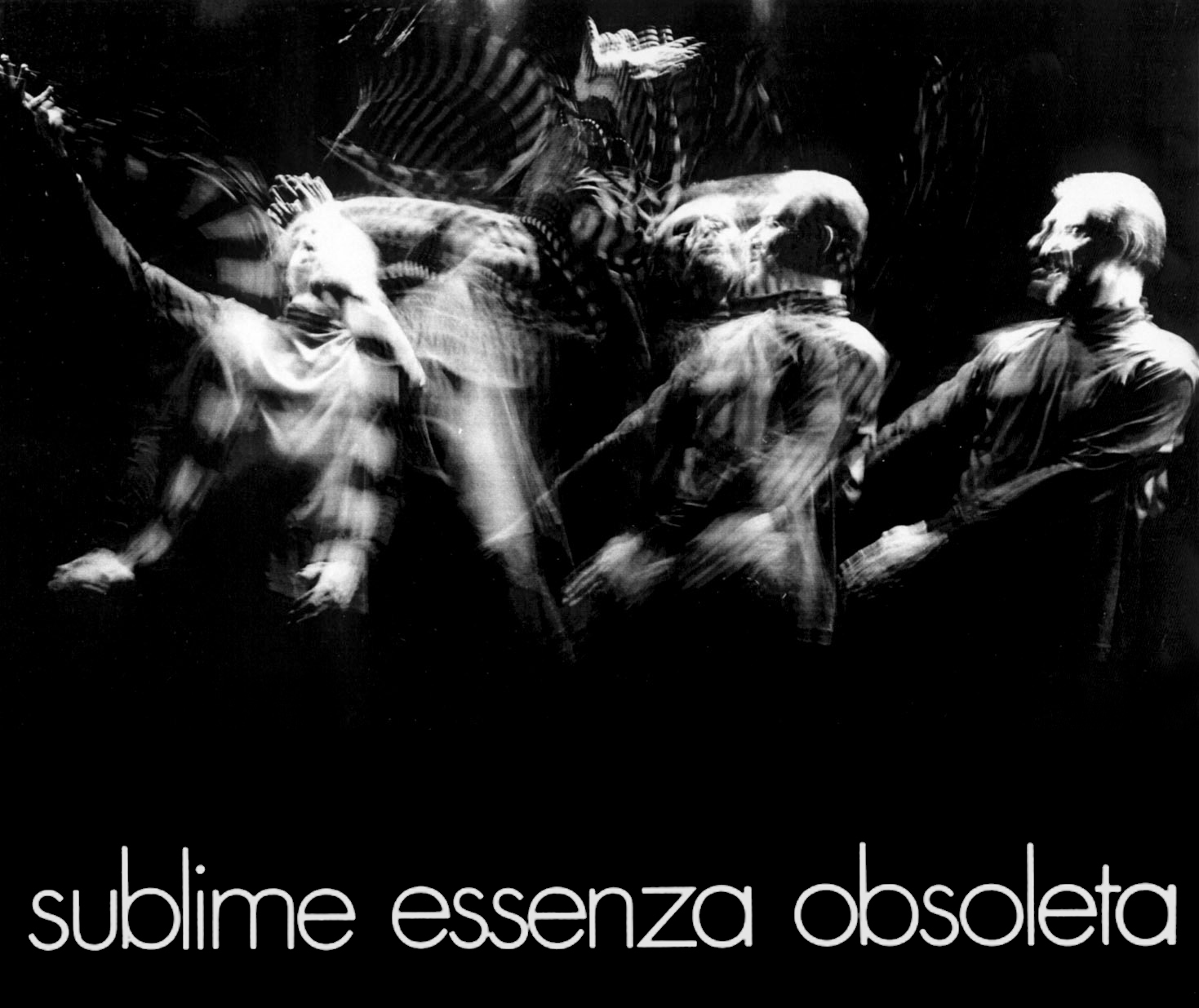
ARRIGO LORA TOTINO
Ironie intermediali per simultaneità poetiche
di Giovanni Fontana
Quando nel 1976 Arrigo Lora Totino crea le sue “fotodinamiche simultanee” riapre in chiave poetica, dopo sessantacinque lunghi anni, il discorso introdotto nel 1911 da Anton Giulio Bragaglia con il suo “fotodinamismo futurista”. Lora Totino risollecita l’attenzione sul complesso rapporto corpo/spazio/movimento, che riassume in un unico nodo le relazioni che intercorrono tra il dinamismo del corpo nello spazio e la loro rappresentazione bidimensionale, ma anche tra la costruzione scenica dell’immagine e il suo ritmo, il senso del gesto e la sua teatralità; tra l’elemento narrativo e la sua scansione temporale; tra l’interattività delle componenti dell’opera e la loro resa sul piano poetico. Ma c’è di più, perché tutta la problematica bragagliana, imperniata sul movimentismo e sulla traiettoria, intesa come “sintesi di movimento” e come “spirito del gesto”, sull’“essenza del moto” e sulla “significazione del tempo”, esaltata da una condizione nuova di “ultrasensibilità”, qui viene mutuata a fini poetici in un’ottica intercodificata. Del resto lo stesso Bragaglia aveva scritto: “[…] abbiamo cento voci in noi e cento visioni ottiche cerebrali e sentimentali, che si mescolano, si compenetrano, si unificano con quella reale dell’attimo presente”.[1] Arrigo Lora Totino provvede ad asservire il gioco fotodinamico all’esigenza di far scattare molle intermediali, in funzione del collegamento con i dati verbali che egli inserisce in basso a mo’ di didascalia, ma che sollecitano, invece, l’attenzione sul parallelismo delle progressioni metamorfiche dell’immagine e della parola stessa, che si sostengono reciprocamente in una sorta di traslazione significante che riassume tutto il senso dell’opera.
Si tratta di un modo di collegare dinamicamente parola e immagine scegliendo di affidarsi all’attraversamento mediatico: performance gestuale, fotografia, scrittura verbo-visuale: un processo costruttivo che riassume e fonde tempi e modi, corpi e luoghi in una teoria di azioni che slittano l’una sull’altra in un divertissement che si fonda sull’ironia delle correlazioni. Ciò risulta evidente sul piano dell’immagine per gli effetti vibranti delle compenetrazioni e delle trasparenze; ma con altrettanta evidenza si manifesta sul piano verbale per i giochi allitterativi che rilanciano in primo piano il ruolo di una sonorità tipograficamente compressa, esaltandone gli effetti in un contrappunto amplificato sinesteticamente da oscillazioni e fremiti figurali.
Ma perché aprire con queste osservazioni sulle “fotodinamiche simultanee”? La risposta sta nel loro specifico valore, che riesce a riassumere (sul piano effettivo, ma anche emblematico) l’intera poliedrica opera di Lora Totino, un artista multiforme che punta tutto sull’interattività dei codici alla ricerca di nuovi linguaggi poetici. Fin dai primi anni Sessanta si impegna in ricerche sulle interrelazioni tra poesia visuale e fonica, tra linguaggi plastico-figurali e movimento. Rifacendosi al manifesto marinettiano della declamazione dinamica e sinottica (1916), non disdegna gli aspetti spettacolari di una vocalità congiunta all’uso articolato del corpo con funzioni ritmiche ed espressive. Ha osservato Eugenio Miccini che nel suo lavoro "tutto è ritmato dalle cadenze delle mani, dagli andamenti del corpo, morbidi, saltellanti, vibranti." [2] Infatti, non ha mai smesso di muoversi tra parola, suono e immagine, vocalità, corporeità, gestualità, perlustrando ogni territorio con estrema curiosità nell’intento di verificarne i livelli di comunicazione sul piano sinestetico. È riuscito a proporre un’infinità di modelli poetici: passando dalla poesia concreta alla poesia sonora, smontando parole o ricucendo fonemi, inventando fonie e polifonie, prosodie e cromofonemi, progettando verbotetture, escogitando scenari di poesia ginnica, mimodeclamazioni e mimogrammi a forza di colpi di glottide e colpi di reni, sperimentando concerti bruitisti, poesia e musica liquida e, addirittura, confezionando “pappapoemi” per i buongustai della poesia. Ma tutto vibra incessantemente sul crinale che divide un linguaggio dall’altro. Anche sul piano operativo Lora Totino effettua trasposizioni tecniche facendo slittare i più diversi procedimenti compositivi da un ambito ad un altro. Non esclude di fare della geometria la sua sintassi o, come poeta sonoro, di individuare nuovi spazi acustici adottando le tecniche di montaggio in analogia con quanto avviene nelle arti visive (collage e décollage), oppure di utilizzare il linguaggio gestuale traendolo dal repertorio del cabaret, ribadendo, però, che la mimodeclamazione costituisce uno degli aspetti del sonoro. Ma non trascura il testo lineare, ricco di allitterazioni e di assonanze, per rilanciarlo sul piano acustico e scommettere sulla melodia del parlato, operando anche sul contrappunto determinato da voci in sovrapposizione, che non escludono la stratificazione di lingue diverse, sia su nastro, sia in concerto con gruppi “polifonici”, come il “Trio Phoesia”, con Agostino Contò e Franco Verdi (poi con Milli Graffi). Nello stesso tempo è interessante ricordare, per sottolineare la sua vena istrionica e stravagante, l’uso dei curiosi strumenti finalizzati alla performance di poesia sonora particolarmente funzionali alle atmosfere cabarettistiche, come quelli realizzati per lui da Piero Fogliati: il liquimofono, l’idromegafono, il fleximofono, il mozzaparole, congegni acustici, in realtà, con funzione più scenica che sonora. Anche se originariamente finalizzati alla modellazione e alla deformazione del materiale linguistico, attraverso forzature vocali condizionate dal movimento del corpo e dalle esigenze della scena, questi strumenti, per gli aspetti sonori specifici, hanno ceduto il loro spazio alla conquiste della tecnologia elettronica, che, oggi, riesce ad aprire spazi acustici insospettati. Continuano però ad avere una notevole valenza plastica e un deciso peso scenico, ribadendo il principio dell’ironia, una costante irriducibile che percorre tutte le forme poetiche di Arrigo Lora Totino. Ironia del testo, ironia della voce, ironia del corpo e del gesto, ironia del suono si compongono in un carosello vorticoso dove i toni di un acuto cabaret determinano (come hanno sempre determinato) la loro forte attrattiva sul pubblico che, davanti a questa figura di audace e bizzarro poeta in calzamaglia, non ha mai smesso di divertirsi.
Note
[1] Anton Giulio Bragaglia, Fotodinamismo Futurista, Einaudi, Torino, 1970
[2] Eugenio Miccini, Poesia visiva e dintorni, Meta, Firenze 1995.
Giovanni Fontana
GIOVANNI FONTANA, EPIGENETIC POETRY 1968-2014
Produced & mastered by Sean McCann
Recital Records, Los Angeles
LP and book
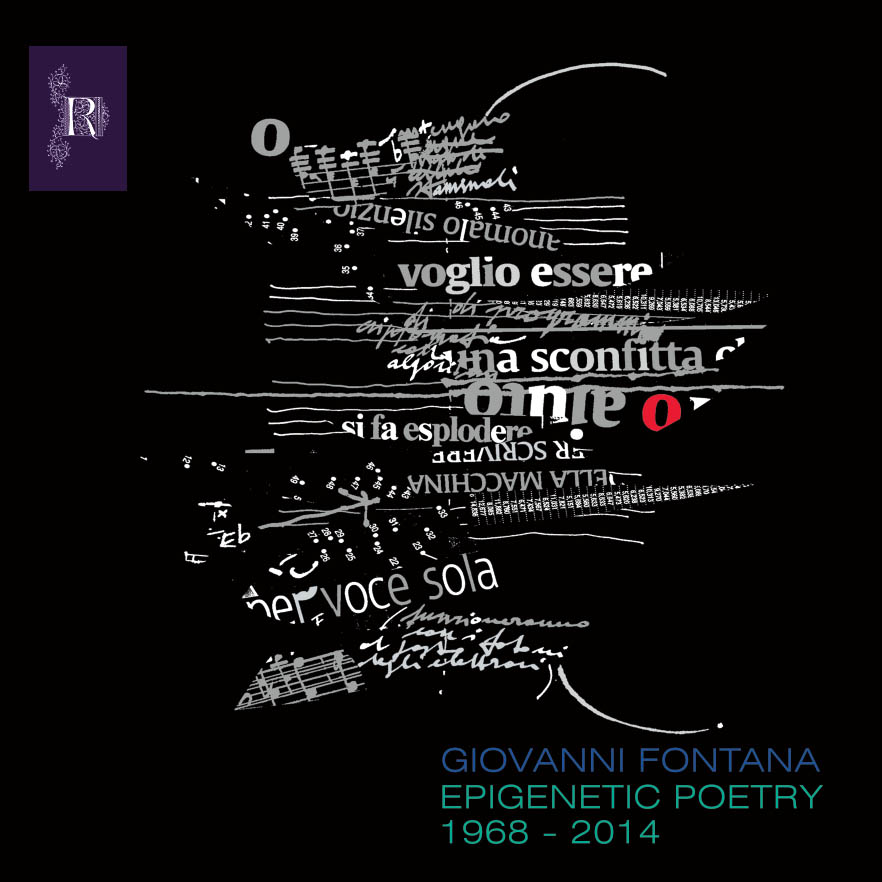
First Edition (315 copies)
includes:
• 16 page 9″x9″ pamphlet with 3 critical essays:
“Hypervox and electrophonic mask” by Giovanni Fontana
“Giovanni Fontana: Poetry as Action and Sound” by Patrizio Peterlini
“Giovanni’s Adventures in Mediumland” by Jean-Pierre Bobillot
Color images (score excerpts, artwork, etc.) and Program Notes written by Fontana
• Remastered for vinyl by Sean McCann
• Digital download coupon (WAVs / MP3s)
An anthology documenting the sound works by the Italian sound poet Giovanni Fontana (b. 1946). These pieces, dating from 1968 – 2014, are scarcely available; culled from cassette magazines and art-book compendiums, along with two unreleased recordings.
Fontana has been a pioneer of Italian visual poetry, sound poetry, and experimental theater since the mid-1960’s. Together with peer Adriano Spatola, Giovanni worked on the publication Tam Tam (founded in 1972). He also rode in the same wagon as Arrigo Lora-Totino, splicing, pasting, and folding the compass of Italy’s intermedia.
In one light, Fontana’s voice erects a brutal and guttural effigy of man, primitive and hermetic. Yet, stepping to the side – one can see the thin strands of support bolstering such combustibles. As chested-strings of a piano, Fontana strikes firmly across the resonating spread of discovery and acceptance.
In addition to voice; jaw-harp, guitar, whistle, piano, and harpsichord are featured in these recordings, though the musical elements are secondary to the voice. Mouth, throat, and even nose [Poema a naso features a microphone inserted in the nostril] take the stage-light.
The interconnection between Giovanni’s visual and audio artwork is significant. Words twist and dissolve; blotted with ink, soaring across an empty score. This album acts as a frame for these 14 pieces, which can be seen as they are heard – spilling from speakers as letters meeting paper.
Towards a Total Poetry
JULIEN BLAINE, F. TIZIANO, ADRIANO SPATOLA, PAUL VANGELISTI
Produced by Sean McCann &/ Paul Vangelisti
Recital Records, Los Angeles
LP and book
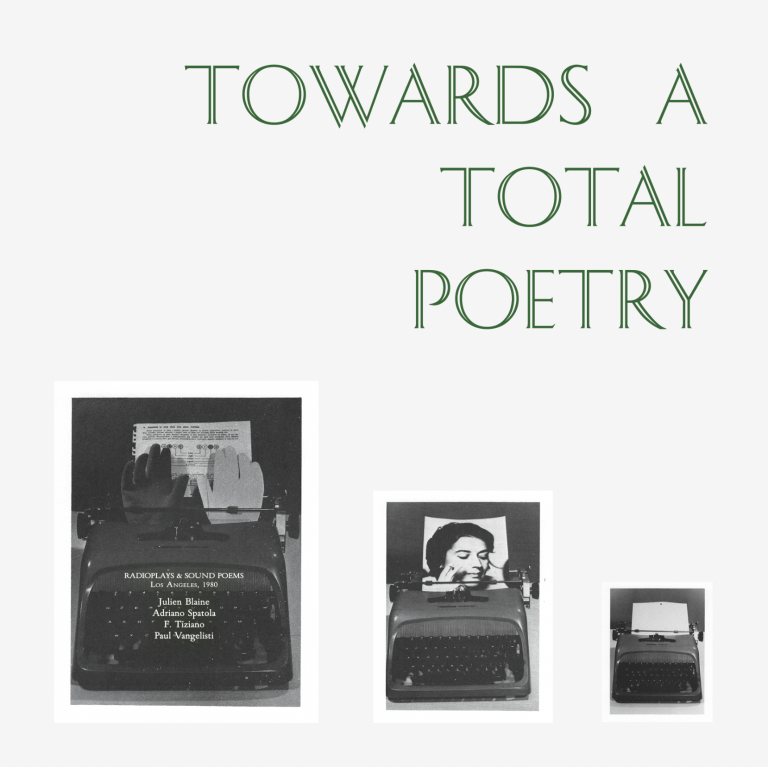
Culled from live performances in Los Angeles in 1980, Towards A Total Poetry holds radioplays and sound poems by Julien Blaine, Adriano Spatola, F. Tiziano, and Paul Vangelisti. Two concerts were organized by poet and professor Vangelisti and broadcast on his KPFK radio show. A rare gathering of extreme French and Italian sound poets in California, flown out on with an arts funding grant (my, how things have changed!). A jarred specimen on a golden platter of a time passed.
The electricity of the performances is unparalleled. Sadistically funny, dizzy with confusion: a map lies dissected on the table. Adriano Spatola (1941-1988) is the most beautiful Italian post-war poet, also publisher of Baobab, Tam Tam, Geiger editions. His stage presence is that of a drunken wolverine, thrashing his words and letters, madly chuckling and whispering secrets to himself. Spatola interprets a disfigured rendition of “Buddenbrooks,” a traumatic and shocking radioplay, held alongside his infamous “Aviation / Aviateur” and “Al Capone Poem,” read with explosive tension. His younger brother, F. Tiziano, is a more mysterious figure. His radioplay, “Los Angeles Bridge,” has four characters: North, South, East, and West. Quibbling through a fever dream over a card game. Professional voice actors were hired for all of the radioplays, translated from Italian by Vangelisti (as with all of Spatola’s English publications). French artist and sound poet Julien Blaine (1942) composed the play “Passe / Futur” – utilizing his actors as verbal instruments: buzzing and howling as carefully as dots on sheet-music. His sound poems are intensely hilarious, “Amputation” mimics the sound of four severing surgeries, and “Mots d’enfants” still confuses me as to what exactly is going on… Paul Vangelisti’s works open and close Towards A Total Poetry. The Los Angeles poet and publisher of Red Hill Press organized the affair and was able to hold his own against such powerful artists. Paul’s pieces are conceptual, opening with a fitting typewriter hymn, “Radio,” and concluding with “Auld Lang Syne,” the Ms of the phone book sung by chorus.
These are some of the strangest radioplays in existence. A format I feel is underused. The infusion of drama and comedy and open air to fill… oh, the possibilities.
Towards A Total Poetry is of my personal favorites on Recital… exemplifying the core of what I love to publish.
Sean McCann, August 2019
